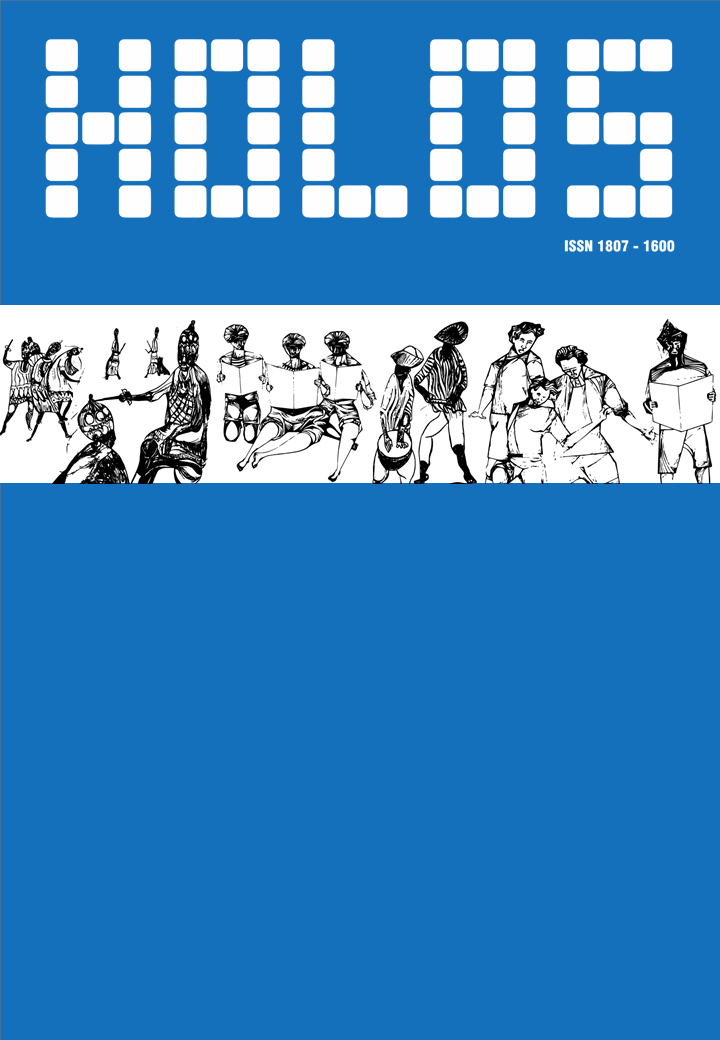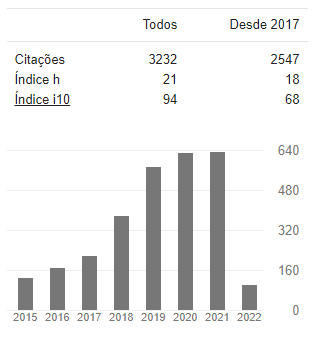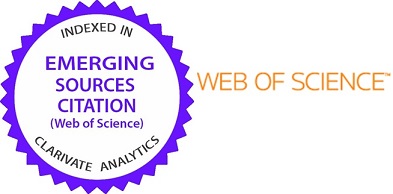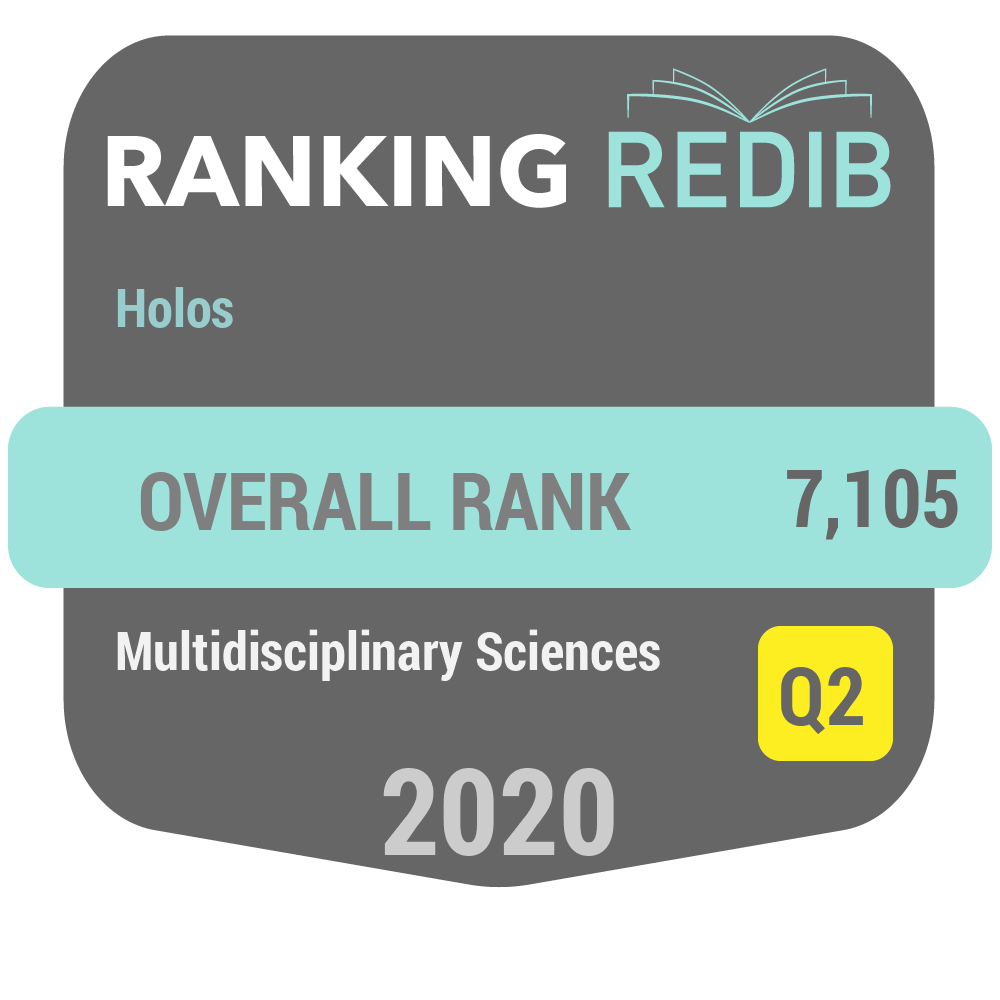RESILIENCIA Y TURISMO: EL CASO DE LA CIUDAD DE BAÑOS DE AGUA SANTA - ECUADOR
DOI:
https://doi.org/10.15628/holos.2016.4303Palavras-chave:
desastres naturales, turismo, impacto económicoResumo
En 1999, la ciudad turística de Baños de Agua Santa en Ecuador fue evacuada debido a la inminente erupción del volcán Tungurahua, el 90% de este territorio se encuentra en una zona de alto riesgo sísmico y volcánico, la evacuación destruiría la principal actividad económica que es el turismo, los habitantes en contra de las disposiciones gubernamentales deciden retornar y se ven en la necesidad de adaptarse a las nuevas condiciones que les ha obligado un proceso eruptivo que lleva más de 15 años, durante este tiempo la ciudad desarrolla procesos adaptativos que en este trabajo se lo explican desde el paradigma de la resiliencia y el modelo heurístico de panarquía siendo éste el principal objetivo. El modelo heurístico de panarquía explica a través de sus diferentes ciclos, los procesos de destrucción creativa e innovación que los evidencia el caso presentado; el principal hecho que se destaca es la evolución de la actividad turística en un nuevo ciclo panárquico.
Downloads
Referências
ADGER, N., HUGHES, T., FOLKE, C., CARPENTER, S., & ROCKSTRÖM, J. (2005). Social-ecological resilience to coastal disasters. Science, 1036-1039.
AGUILERA, E., & DUEÑAS, W. (2007). Las erupciones explosivas del volcán Tungurahua de julio y agosto de 2006. Quito: COSUDE.
AINUDDIN, S., & ROUTRAY, J. (2012). Community resilience framework for an earthqake prone area in Baluchistan. International Journal of Disaster Risk Reduction, 25-36.
ALLEN, C. R., ANGELER, D. G., GARMESTANI, A. S., GUNDERSON, L. H., & HOLLING, C. (2014). Panarchy: Theory and Application. Ecosystems, 578-589.
ANGELER, D. G., ALLEN, C. R., & JOHNSON, R. K. (2013). Measuring the relative resilience of subarctic lakes to global change: redundancies of functions within and across temporal scales. Journal of Applied Ecology, 572-584.
ASHBY, W. R. (1957). An Introduction to Cybernetics. London: Chapman & Hall Ltd.
AYALA, J.-C., & MANZANO, G. (2014). The resilience of the entrepreneur. Influence on the success of the business. A longitudinal analysis. Journal of Economic Psychology, 126-135.
BCE. (10 de Agosto de 2015). Banco Central de Ecuador. Obtenido de http://www.bce.fin.ec/index.php/component/k2/item/293-cuentas-provinciales
BELLWOOD, D., HUGHES, T., FOLKE, C., & NYSTRO, M. (2004). Confronting the coral reef crisis. Nature, 827-833.
BOSMA, N., CODURA, A., LITOVSKY, Y., & SEAMAN, J. (2012). A report on the design, data and quality control of the Global Entrepreneurship Monitor. London: Global Entrepreneurship Research Association.
BRUNEAU, M., CHANG, S. E., EGUCHI, R. T., LEE, G. C., O’ROURKE, T. D., O’ROURKE, T. D., Y OTROS. (2003). A Framework to Quantitatively Assess and Enhance the Seismic Resilience of Communities. Earthquake Spectra, 733-752.
CANNON, T. (2008). Reducing People´s Vulnerability to Natural Hazards. Research Paper No. 2008/34 UNU-WINDER, http://www.wider.unu.edu/publications/working-papers/research-papers/2008/en_GB/rp2008-34/.
CARPENTER, A. (2014). Resilience in the social and physical realms: Lessons from the Gulf Coast. International Journal of Disaster Risk Reduction, 1-12.
CARPENTER, S., ARROW, K., BARRETT, S., BIGGS, R., BROCK, W., & CRÉPIN, A.-S. (2012). General Resilience to Cope with Extreme Events. Sustainability, 3248-3259.
CAVALLO, A., & IRELAND, V. (2014). Preparing for complex interdependent risk: A system of systems approach to building disaster resilience. International Journal of Disaster Risk Reduction, 181-193.
CHOPRA, S., & KHANNA, V. (2014). Understanding resilience in industrial symbiosis networks: Insights from network analysis. Journal of environmental management, 86-94.
CUTTER, S. L., BARNES, L., BERRY, M., BURTON, C., EVANS, E., TATE, E., Y OTROS. (2008). A place-based model for understanding community resilience to natural disasters. Global Environmental Change, 598-606.
CUTTER, S., BURTON, C., & EMRICH, C. (2010). Disater Resilience Indicators for Benchmarking Baseline Conditions. Journal of Homeland Security and Emergency, 1-22.
FOLKE, C. (2002). Social-Ecological Resilience and Behavioural Responses. Recuperado el 22 de 04 de 2014, de The Beijer Intitute of Ecological Economics: http://www.beijer.kva.se/PDF/87823499_Disc155.pdf
FOLKE, C. (2006). Resilience: The emergence of a perspective for social–ecological systems analyses. Global Environmental Change, 253-267.
FOLKE, C., HOLLING, C. S., & PERRINGS, C. (1996). Biological Diversity, Ecosystems and The Human Scale. Ecological Applications, 1018-1024.
FREIRE-GUEVARA, E. (2001). Baños en el tiempo y el espacio. Quito: Casa de la Cultura Ecuatoriana.
FRIBORG, O., BARLAUG, D., MASRTINUSSEN, M., ROSENVINGE, J., & HJEMDAL, O. (2005). Resilience in relation to personality and intelligence. International Journal of Methods in Psychiatric Research, 29-42.
GALL, M. (2013). From social vulnerability to resilience: measuring progress toward disaster risk reduction. Bonn: United Nations University.
García, R. (2006). Sistemas Complejos. Conceptos, método y fundamentación epistemológica de la investigación interdisciplinaria. Barcelona: Gedisa S.A.
Gobierno Autónomo Descentralizado del cantón Baños de Agua Santa . (2015). Diagnóstico del cantón Baños de Agua Santa (2014-2019). Baños: GAD Baños.
Godschalk, D. (2003). Urban Hazard Mitigation: Creating Resilient Cities. Natural Hazars Review, 136-143.
GRABHER, G., & STARK, D. (1997). Organizing Diversity : Evolutionary Theory , Network Analysis and Postsocialism; Stark, David; . Regional Studies, 533-544.
GUNDERSON, L. (2000). Ecological Resilience - In Theory and Application. Annual Review Of Ecology and Systematics, 425-439.
GUNDERSON, L., & HOLLING, C. S. (2002). Panarchy: Understanding Transformations in Human and Natural System. Washington DC: Island.
HEYLIGHEN, F. (2001). The science of self-organization and adaptivity. The Encyclopedia of Life Support Systems, 253-280.
HOLLAND, J. H. (1995). Hidden Order. Haw adaptation builds complexity. USA: Helix Books.
HOLLAND, J. H. (2006). Studying Complex Adapatative Systems. Jrl Syst Sci & Complexity, 1-8.
HOLLING, C. S., & GUNDERSON, L. H. (2002). Resilience and Adaptative Cycles. En L. H. Gunderson, & C. S. Holling, Panarchy, Understanding Transformation in Human and Natural Systems. Washington: Island.
HOLLING, C. S., GUNDERSON, L. H., & LUDWING, D. (2002). In Quest of a Theory of Adaptative Change. En L. H. Gunderson, & C. S. Holling, Panarchy. Understanding Transformations in Human and Natural Systems. Washington: Island Press.
IFEJIKA, C., WIESMANN, U., & RIST, S. (2014). An indicator framework for assessing livelihood resilience in the context of social–ecological dynamics. Global Environmental Change, 109-119.
INEC. (2010). Censo Nacional de Población y Vivienda . Quito: Instituo Nacional de Estadísticas y Censos INEC.
INEC. (2010). Censo Nacional Económico. Quito: Instituto Ecuatoriano de Estadísticas y Censos INEC.
INEC. (2013). Directorio empresarial . Quito: INEC.
ISLAM, M., SWAPAN, M., & HAQUE, S. (2013). Disaster risk index: How far should it take account of local attributes? International Journal of Disaster Risk Reduction, 76-87.
JOERIN, J., SHAW, R., TAKEUCHI, Y., & KRISHNAMURTHY, R. (2012). Assessing community resilience to climate-related disaster in Chennai, India. International Journal of Disaster Risk Reduction, 44-54.
LANE, L. R., TOBIN, G. A., & WHITEFORD, L. M. (2003). Volcanic hazard or economic destitution: hard choices in Banños, Ecuador. Environmental Hazards, 23-34.
LASIO, V., CAICEDO, G., ORDEÑANA, & VILLA, R. (2014). Global Entrepreneurship Monitor. Guayaquil: ESPAE- ESPOL.
MAILLAT, D. (1995). Desarrollo teritorial, milieu y política regional . En A. Vásquez, & G. Garofoli, Desarrollo económico local en Europa (págs. 37-51). Madrid: Colegio de Economistas.
MARTIN, R., & SUNLEY, P. (14 de octubre de 2013). On the Notion of Regional Economic Resilience : Conceptualisation and Explanation. Working paper about Evolutionary Geography. Utrecht University. Urban & Regional research centre Utrech.
MORÍN, E. (1981). El Método: La Naturaleza de la Naturaleza. Madrid: Cátedra.
ORENCIO, P. M., & FUJII, M. (2013). A localized disaster-resilience index to assess coastal communities based on an analytic hierarchy process (AHP). International Journal of Disaster Risk Reduction, 62-75.
ÖSTH, J., REGGIANI, A., & GALIAZZO, G. (2015). Spatial economic resilience and accessibility: A join perspective. Computers, Environment and Urban Systems, 148-159.
PASOL, B. (2014). ¿Hacia una "nueva época" en los estudios de momoria social? Revista Mexicana de Ciencias Políticas y Sociales, 291-316.
PETERSON, G., ALLEN, C. R., & HOLLING, C. S. (1998). Ecological Resilience , Biodiversity , and Scale Ecological Resilience , Biodiversity , and Scale. Ecosystems, 6-18.
PROAG, V. (2014). The concept of vulnerability and resilience. Procedia Economics and Finance, 369-376.
RODIMA-TAYLOR, D., & OLWIG, M. C. (2012). Adaptation as innovation, innovation as adaptation: An institutional approach to climate change. Applied Geography, 107-111.
SCHNEIDER, B. (2007). Resiliencia: Cómo construir empresas exitosas en contextos de inestabilidad. Bogotá: Norma.
SCHUMPETER, J. A. (1942). Creative Destruction. Capitalism, Socialism and Democracy, 82-85.
SHERRIEB, K., NORRIS, F., & GALEA, S. (2010). Measuring Capacities for Community Resilience. Social indicators research, 227-247.
SINGH-PETERSON, L., SALMON, P., GOODE, N., & GALLINA, J. (2014). Translation and evaluation of the Baseline Resilience Indicators for Communities on the Sunshine Coast, Queensland Australia. International Journal of Disaster Risk Reduction, 116-126.
SMIT, B., & WANDEL, J. (2006). Adaptation, adaptive capacity and vulnerability. Global enviromental Change, 282-292.
STARK, D. (2014). On Resilience. Social Sciences, 60-70.
TIERNEY, K., & BRUNEAU, M. (2007). Conceptualizing and Measuring Resilience. A key to disaster loss reduction. TR News, 14-18.
TOBIN, G., & WHITERFORD, L. (2002). Community resilience and volcano hazard: the eruption of Tungurahua and evacuation of the faldas in Ecuador. Disasters, 28-48.
UNISDR, T. U. (9 de septiembre de 2015). What´s new. Obtenido de http://eird.org/news-old-version.htm
WALKER, B., & SALT, D. (2012). Resilience Practice. Building Capacity to Absorb Disturbance and Maintain Function. Washington DC: Island Press.
WALKER, B., HOLLING, C. S., CARPENTER, S., & KINZIG, A. (2004). Resilience , Adaptability and Transformability in Social – ecological Systems. Ecology and Society.
WHITEFORD, L., TOBIN, G., VINDROLA-PADROS, C., & LASPINA, C. (2013). We have to think about the children: parenting responses in chronic natural disasters . Emergency Management, 59-75.
WILSON, E. (1992). The diversity of life. Cambridge, Masaachusetts, USA: Belknap.
WINDLE, G., BENNETT, K., & NOYES, J. (2011). A methodological review of resilience measurement scales. Health and quality of life outcomes, www.hqlo.com/content/9/1/8.
ZOBEL, C., & KHANSA, L. (2014). Characterizing multi-event disaster resilience . Computers and Operations Research, 83-94.









































